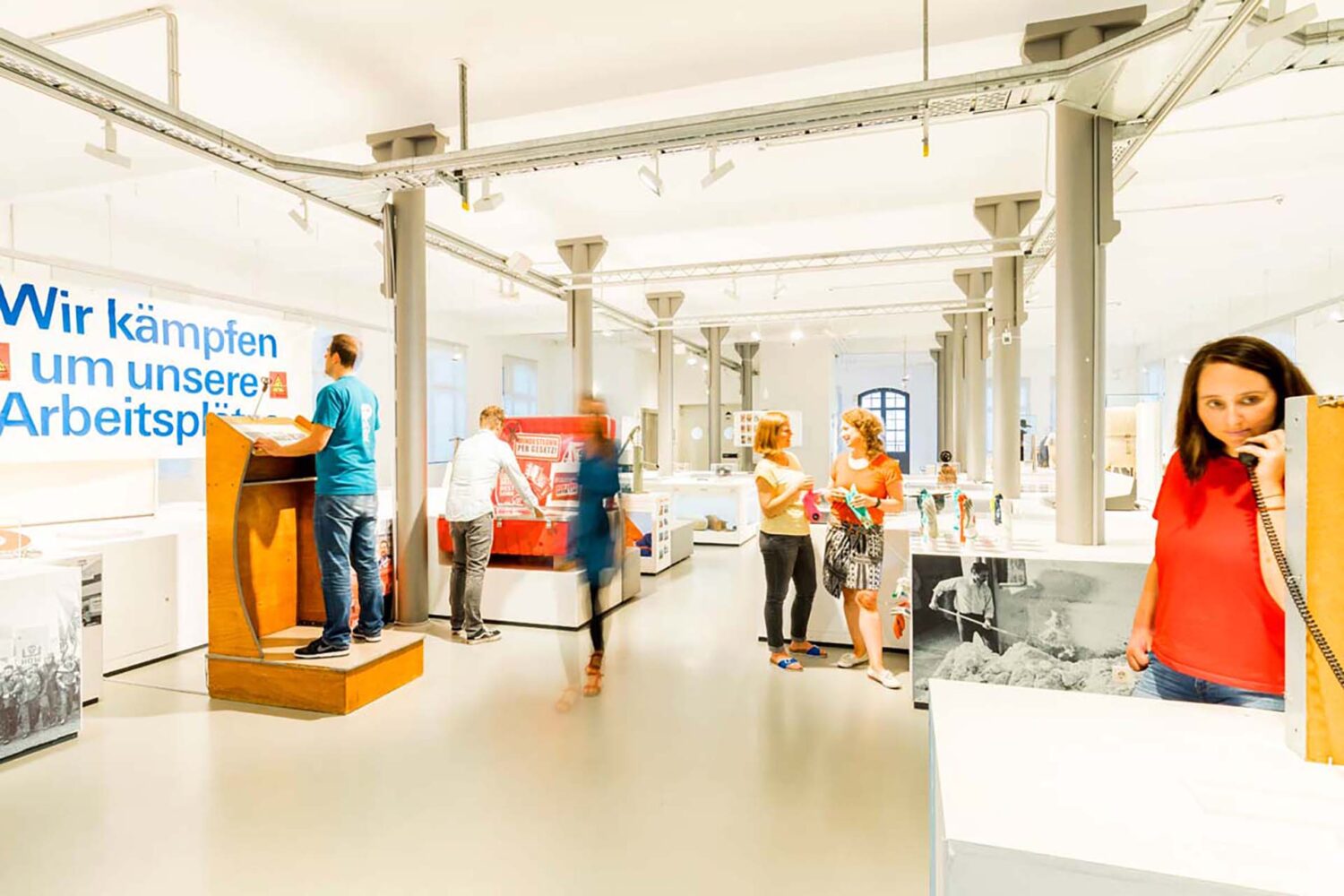In a seated area equipped with around 20 telephone receivers, the museum’s visitors can listen to the life stories of labourers, office workers and employees from a wide range of jobs, professions, sectors and industries. These stories are illustrated with selected exhibits that played a key role in the professions, which include boiler maker, locksmith, carpenter, university lecturer, nursery school teacher, underground train driver, parcel postman, master hairdresser, electrical fitter, engineer, grinder and polisher, seamstress, member of the works council, vocational college teacher, master confectioner, housewife, textile salesman, pharmacist, gardener and tailor.
Type Case and the Museum Database
A large type case that covers an entire wall has been filled with objects from the museum’s collection that illustrate central keywords and aspects of work. Visitors can enter keywords into the museum database and access information about the exhibits as well as searching for other objects or documents in the museum’s collection.
The following keywords are illustrated with objects and documents:
Wage, working hours, labour organisation (work preparation), working morale, work clothes, control at work, collective wage agreement, workers’ movement, work discipline, pride in work, “Blue Monday”, works doctor, factory work, assembly line work, manual work, work at home, illegal work, monotonous work, self-employment, sex work, rationalisation, moonlighting, work from home, temporary work, labour leasing, precarious employment, trade supervision, salary, master, journeyman, dual system training, wage dumping, minimum wage, piece wage, negotiated wage.


